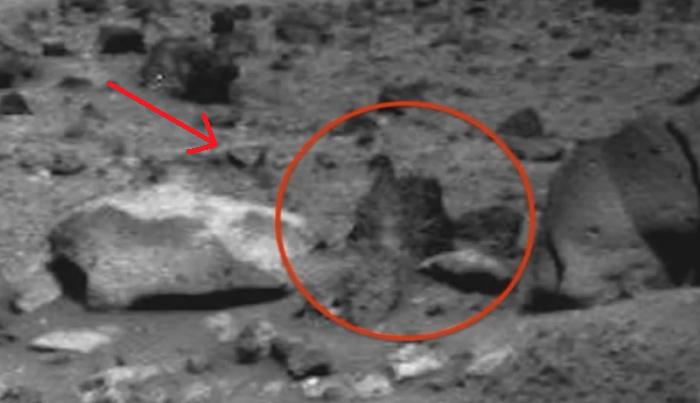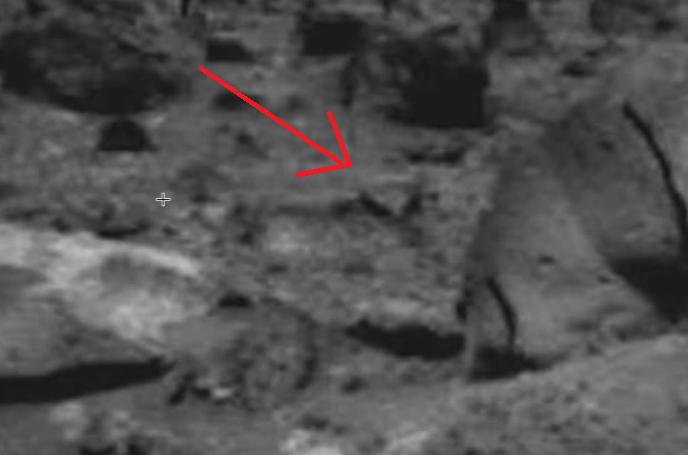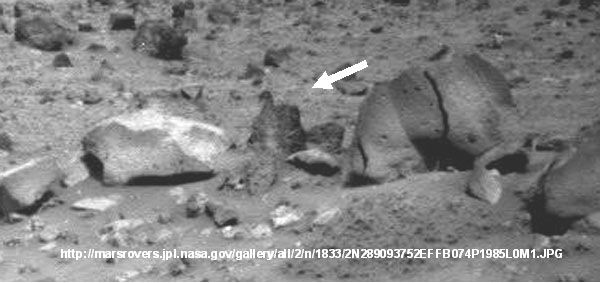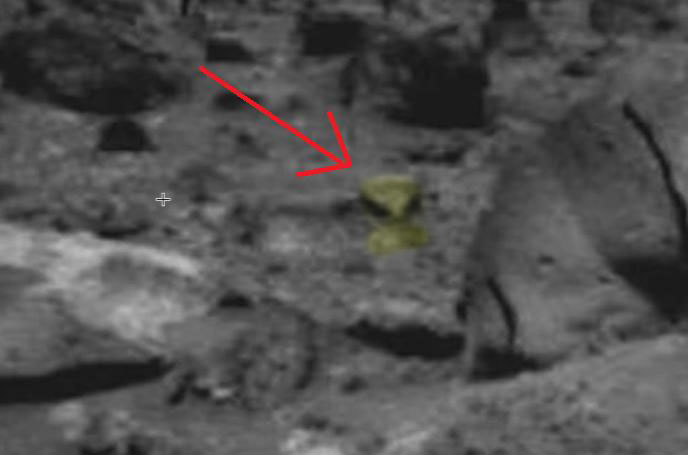It looks like you're using an Ad Blocker.
Please white-list or disable AboveTopSecret.com in your ad-blocking tool.
Thank you.
Some features of ATS will be disabled while you continue to use an ad-blocker.
share:
a reply to: anonentity
Actually, the gravity at the surface of Mars is 3.71 m/s^2 so it's a bit more than 10 feet/s^2
Average surface pressure of the atmosphere on Mars is around 0.636 kPa.
Earth's average pressure is around 101.32 kPa
That makes it only 0.6 percent. Not 1 percent.
Just trying to help keep the facts straight.
Actually, the gravity at the surface of Mars is 3.71 m/s^2 so it's a bit more than 10 feet/s^2
Average surface pressure of the atmosphere on Mars is around 0.636 kPa.
Earth's average pressure is around 101.32 kPa
That makes it only 0.6 percent. Not 1 percent.
Just trying to help keep the facts straight.
a reply to: anonentity
So, you think it is fishy that a vehicle experiencing the heat due to atmospheric friction can have parachutes that don't melt? What about the Russian Soyuz capsule, then, which has a few atmospheric entries every year without its parachute melting?
In the case of the MSL (the Curiosity Rover), most of the speed of the craft was diminished due to the friction of atmospheric entry -- not due to the parachute. The friction of atmospheric entry of the craft caused it to slow down to about 1000 mph prior to the chutes deploying. 1000 mph is not enough speed for the friction to cause the nylon to melt.
Granted, the MSL craft did heat up quite a bit during entry -- about 3,800 F at 15 miles up moving at 11,000 mph (maximum combination of speed and atmospheric thickness), but that is long before the chute deploys. The atmosphere has slowed down the craft quite a bit by then, and the speed no longer produces great frictional heat.
Going back to the Russian Soyuz: obviously, vehicles such as the Soyuz capsule DO IN FACT re-enter Earth's atmosphere after orbiting at 17,000+ mph, and they also use parachutes. The earth's atmosphere is even thicker, and cause more heat friction, yet the Russian's parachutes don't melt; that's because (just like the mars MSL) the friction of re-entry has slowed the craft down quite a bit BEFORE the chute is deployed.
So, you think it is fishy that a vehicle experiencing the heat due to atmospheric friction can have parachutes that don't melt? What about the Russian Soyuz capsule, then, which has a few atmospheric entries every year without its parachute melting?
In the case of the MSL (the Curiosity Rover), most of the speed of the craft was diminished due to the friction of atmospheric entry -- not due to the parachute. The friction of atmospheric entry of the craft caused it to slow down to about 1000 mph prior to the chutes deploying. 1000 mph is not enough speed for the friction to cause the nylon to melt.
Granted, the MSL craft did heat up quite a bit during entry -- about 3,800 F at 15 miles up moving at 11,000 mph (maximum combination of speed and atmospheric thickness), but that is long before the chute deploys. The atmosphere has slowed down the craft quite a bit by then, and the speed no longer produces great frictional heat.
Going back to the Russian Soyuz: obviously, vehicles such as the Soyuz capsule DO IN FACT re-enter Earth's atmosphere after orbiting at 17,000+ mph, and they also use parachutes. The earth's atmosphere is even thicker, and cause more heat friction, yet the Russian's parachutes don't melt; that's because (just like the mars MSL) the friction of re-entry has slowed the craft down quite a bit BEFORE the chute is deployed.
edit on 5/19/2014 by Soylent Green Is People because: (no reason given)
a reply to: Soylent Green Is People
Or the Venera probes which landed on Venus using parachutes. Venus is a tad bit hotter than Mars...
Or the Venera probes which landed on Venus using parachutes. Venus is a tad bit hotter than Mars...
originally posted by: Soylent Green Is People
a reply to: anonentity
So, you think it is fishy that a vehicle experiencing the heat due to atmospheric friction can have parachutes that don't melt? What about the Russian Soyuz capsule, then, which has a few atmospheric entries every year without its parachute melting?
In the case of the MSL (the Curiosity Rover), most of the speed of the craft was diminished due to the friction of atmospheric entry -- not due to the parachute. The friction of atmospheric entry of the craft caused it to slow down to about 1000 mph prior to the chutes deploying. 1000 mph is not enough speed for the friction to cause the nylon to melt.
Granted, the MSL craft did heat up quite a bit during entry -- about 3,800 F at 15 miles up moving at 11,000 mph (maximum combination of speed and atmospheric thickness), but that is long before the chute deploys. The atmosphere has slowed down the craft quite a bit by then, and the speed no longer produces great frictional heat.
Going back to the Russian Soyuz: obviously, vehicles such as the Soyuz capsule DO IN FACT re-enter Earth's atmosphere after orbiting at 17,000+ mph, and they also use parachutes. The earth's atmosphere is even thicker, and cause more heat friction, yet the Russian's parachutes don't melt; that's because (just like the mars MSL) the friction of re-entry has slowed the craft down quite a bit BEFORE the chute is deployed.
ericktheawfull says the atmosphere of Mars is .6 that of Earths, you said that the atmosphere slows the MSL down quite a bit before the chute is deployed, I suggest what atmosphere is their at 5 miles high on mars, to act as an atmospheric break? under the printed version. The vehicle should have been still accelerating to very high speeds.
I can understand the re-entry to Earths atmosphere but into a near vacuum ? at more than 10 feet per second per second. It doesn't seem to my thinking that this would do diddly squat to a mass around 800 kilos.
a reply to: anonentity
Well it's a good thing that spacecraft behave according the the laws of physics rather than according to your thinking, or there would be a lot of engineers out of a job
Well it's a good thing that spacecraft behave according the the laws of physics rather than according to your thinking, or there would be a lot of engineers out of a job
a reply to: Rob48
Yes but if those parachutes had been made of nylon, they would have melted, so they were obviously made of something which could withstand much higher temperatures. I'm not sure what though, all I could find was a reference to "heat resistant" material.
How high up are meteors when they begin to glow?
Earth's atmosphere
Yes but if those parachutes had been made of nylon, they would have melted, so they were obviously made of something which could withstand much higher temperatures. I'm not sure what though, all I could find was a reference to "heat resistant" material.
Erik was citing surface conditions, but thin air can slow down things a lot more than you think, in fact most truck sized meteors entering Earth's atmosphere already heat up so much where the air is quite thin that they explode high in Earth's atmosphere.
originally posted by: anonentity
I can understand the re-entry to Earths atmosphere but into a near vacuum ? at more than 10 feet per second per second. It doesn't seem to my thinking that this would do diddly squat to a mass around 800 kilos.
How high up are meteors when they begin to glow?
The air is pretty thin 70 km up. Look at the density curve on this graph which is so close to zero at 37 km that you can't even see it without going to another more sensitive plot:
Meteors become incandescent – or glow – almost as soon as they hit Earth’s atmosphere. Some meteors such as the Perseids in August burn up in the atmosphere at about 100 kilometers – or 60 miles – above Earth’s surface.
Other meteors such as the Draconids in October fall to 70 kilometers – or about 40 miles – before they heat up enough to glow and vaporize. The difference is that the Draconids are much slower meteors than the Perseids. So the height in the atmosphere at which a meteor begins to glow depends on its arrival speed.
Earth's atmosphere
edit on 19-5-2014 by Arbitrageur because: clarification
a reply to: Rob48
Tad?
I know you're being kind and diplomatic...but I'll say it........so many ways to learns basic facts found from missions, calculations, etc...a person just has to be too lazy to open a book or look at verified information to say some things on ATS.
Tad?
I know you're being kind and diplomatic...but I'll say it........so many ways to learns basic facts found from missions, calculations, etc...a person just has to be too lazy to open a book or look at verified information to say some things on ATS.
edit on 5/19/2014 by Chamberf=6 because: (no
reason given)
a reply to: Arbitrageur
Well of course (actually IIRC the Venera probes used nylon binding cords that were designed to melt and open the chute, so they turned the heat to their advantage).
But my point is, if parachutes can work on Venus, why not Mars? The designers will choose the right material for the job, and on Mars nylon works just fine.
Well of course (actually IIRC the Venera probes used nylon binding cords that were designed to melt and open the chute, so they turned the heat to their advantage).
But my point is, if parachutes can work on Venus, why not Mars? The designers will choose the right material for the job, and on Mars nylon works just fine.
edit on 19-5-2014 by Rob48 because: (no reason given)
a reply to: anonentity
Yes the atmosphere on Mars is thin, however drag on space craft begins at about 80 km from the surface.
As a craft with a heat shield that is blunt in shape enters the atmosphere, it does so at hypersonic speeds. The air in front of the shield can not get out of the way in time and becomes compressed (oop! There it is! "how to make a thin atmosphere thicker on your way down"). Even at 0.00636 kPa is more than enough to have enough drag to slow a space craft down.
And it will slow it down very quickly.
Here are some links you can look at on the subject:
Drag (physics)
Atmospheric Entry
Mars Atmospheric Entry
Curiosity's parachute, which was a parachute 52 feet wide and did not deploy until it had slowed down to Mach 1.7
The parachute was designed to handle speed up to Mach 2.2.
The parachute was located opposite of where the heat shield was (duh), the heat shield takes the brunt of the heat of re-entry...NOT the rest of the space craft/rover. That's what it's for.
Mach 1.7 (or 2.2 for that mater) is not fast enough to produce high heat from friction.
So yes, based on how the physics of drag works, and also how gases react when a blunt object tries to move through it at hypersonic speeds, it's more than enough to slow an object from orbital speeds (tens of thousand kilometers per hour) to under Mach 2 in just a few minutes.
This works exactly the same on Mars as it does no Earth. The only difference is that our atmosphere reaches out further, and is thicker at the surface.
ETA - almost forgot:
Curiosity's parachute was a Ribbon and Ring Parachute, designed for supersonic speeds and is normally made of kevlar.
Not nylon.
Yes the atmosphere on Mars is thin, however drag on space craft begins at about 80 km from the surface.
As a craft with a heat shield that is blunt in shape enters the atmosphere, it does so at hypersonic speeds. The air in front of the shield can not get out of the way in time and becomes compressed (oop! There it is! "how to make a thin atmosphere thicker on your way down"). Even at 0.00636 kPa is more than enough to have enough drag to slow a space craft down.
And it will slow it down very quickly.
Here are some links you can look at on the subject:
Drag (physics)
Atmospheric Entry
Mars Atmospheric Entry
Curiosity's parachute, which was a parachute 52 feet wide and did not deploy until it had slowed down to Mach 1.7
The parachute was designed to handle speed up to Mach 2.2.
The parachute was located opposite of where the heat shield was (duh), the heat shield takes the brunt of the heat of re-entry...NOT the rest of the space craft/rover. That's what it's for.
Mach 1.7 (or 2.2 for that mater) is not fast enough to produce high heat from friction.
So yes, based on how the physics of drag works, and also how gases react when a blunt object tries to move through it at hypersonic speeds, it's more than enough to slow an object from orbital speeds (tens of thousand kilometers per hour) to under Mach 2 in just a few minutes.
This works exactly the same on Mars as it does no Earth. The only difference is that our atmosphere reaches out further, and is thicker at the surface.
ETA - almost forgot:
Curiosity's parachute was a Ribbon and Ring Parachute, designed for supersonic speeds and is normally made of kevlar.
Not nylon.
edit on 19-5-2014 by eriktheawful because: (no reason given)
edit on 19-5-2014 by eriktheawful because: (no reason
given)
originally posted by: Chamberf=6
a reply to: Rob48
Tad?
I know you're being kind and diplomatic...but I'll say it........so many ways to learns basic facts found from missions, calculations, etc...a person just has to be too lazy to open a book or look at verified information to say some things on ATS.
u know as much as anyone.
and maybe what u know is wrong?
no open mind?
thread drift, what is landing on mars have to do with life on mars?
the OP. wtf?
whatever, it worked, ya think?
pillowcase or a friggin tank chute, who cares?
the OP. wtf?
whatever, it worked, ya think?
pillowcase or a friggin tank chute, who cares?
originally posted by: eriktheawful
a reply to: anonentity
Yes the atmosphere on Mars is thin, however drag on space craft begins at about 80 km from the surface.
As a craft with a heat shield that is blunt in shape enters the atmosphere, it does so at hypersonic speeds. The air in front of the shield can not get out of the way in time and becomes compressed (oop! There it is! "how to make a thin atmosphere thicker on your way down"). Even at 0.00636 kPa is more than enough to have enough drag to slow a space craft down.
And it will slow it down very quickly.
Here are some links you can look at on the subject:
Drag (physics)
Atmospheric Entry
Mars Atmospheric Entry
Curiosity's parachute, which was a parachute 52 feet wide and did not deploy until it had slowed down to Mach 1.7
The parachute was designed to handle speed up to Mach 2.2.
The parachute was located opposite of where the heat shield was (duh), the heat shield takes the brunt of the heat of re-entry...NOT the rest of the space craft/rover. That's what it's for.
Mach 1.7 (or 2.2 for that mater) is not fast enough to produce high heat from friction.
So yes, based on how the physics of drag works, and also how gases react when a blunt object tries to move through it at hypersonic speeds, it's more than enough to slow an object from orbital speeds (tens of thousand kilometers per hour) to under Mach 2 in just a few minutes.
This works exactly the same on Mars as it does no Earth. The only difference is that our atmosphere reaches out further, and is thicker at the surface.
ETA - almost forgot:
Curiosity's parachute was a Ribbon and Ring Parachute, designed for supersonic speeds and is normally made of kevlar.
Not nylon.
Concord travelled at Mach 2 approx. the airframe increased the length of the aircraft by 6 to 8 inches. Due to thermal expansion. It got very hot where the outside air was minus 40c you said Mach 1.7 wasn't enough to cause heat from friction! Remembering Concord cruised at around 60k feet where the air is very refined. The nose cone on occasion reached 150C. Mostly 127C whilst cruising.
Sure the Parachute had Kevlar in it but a nylon Kevlar mix. The parachute was behind the heat shield, but to actually work it would have to be in clear air above and outside the protective shielding to actually create drag.
edit on 19-5-2014 by anonentity because: (no reason
given)
edit on 19-5-2014 by anonentity because: (no reason given)
a reply to: anonentity
Concorde was travelling through Earth's atmosphere.
Why are you arguing that the people who designed the braking system didn't know their job?
The parachute was designed to fire 11.8km above the surface, where the temperature is about minus 70 degrees C. It was 14.1 metres in diameter and designed to generate a peak braking force on Mars of more than 78,000 newtons. Before the mission it was tested on Earth to approximately 144% of this figure.
Which parts of this do you have a problem with?
Concord travelled at Mach 2 approx. the airframe increased the length of the aircraft by 6 to 8 inches.
Concorde was travelling through Earth's atmosphere.
Why are you arguing that the people who designed the braking system didn't know their job?
The parachute was designed to fire 11.8km above the surface, where the temperature is about minus 70 degrees C. It was 14.1 metres in diameter and designed to generate a peak braking force on Mars of more than 78,000 newtons. Before the mission it was tested on Earth to approximately 144% of this figure.
Which parts of this do you have a problem with?
a reply to: Rob48
I know one of those guys. I used to fly with him about 35 years ago. Back then he was designing hang gliders.
We had an old timers hang glider reunion a couple of years ago, just before the MSL landing. Some fascinating, some what inebriated discussions about it were had.
Why are you arguing that the people who designed the braking system didn't know their job?
I know one of those guys. I used to fly with him about 35 years ago. Back then he was designing hang gliders.
We had an old timers hang glider reunion a couple of years ago, just before the MSL landing. Some fascinating, some what inebriated discussions about it were had.
a reply to: nighthawk1954
I see the issue here. The pictures aren't at the same angle, so he's seeing something that is behind the cracked rock, and thinking it's a "creature". Note these two screen shots, taken from the video. Focus on my arrows, that point to a section of the landscape that caught my eye because, well, it sort of looks like eyes. No, I don't think it IS eyes; just caught my attention. Anyway, see here -

Note the location of these "eyes", and the rocks behind them.
Now, in this pic -

Note the location again. It's clear the angle is different, so the "creature" he is seeing is simply something behind the rock.
I see the issue here. The pictures aren't at the same angle, so he's seeing something that is behind the cracked rock, and thinking it's a "creature". Note these two screen shots, taken from the video. Focus on my arrows, that point to a section of the landscape that caught my eye because, well, it sort of looks like eyes. No, I don't think it IS eyes; just caught my attention. Anyway, see here -

Note the location of these "eyes", and the rocks behind them.
Now, in this pic -

Note the location again. It's clear the angle is different, so the "creature" he is seeing is simply something behind the rock.
originally posted by: Phage
What moved was the rover. (sorry about the headache)
[atsimg]http://files.abovetopsecret.com/images/member/e2f3e5d86c1e.gif[/atsimg]
[atsimg]http://files.abovetopsecret.com/files/35d8c81df0c0e8ba.gif[/atsimg]
Discussed here:
www.abovetopsecret.com...
Why don't you post the final image in your gif?


marsrovers.jpl.nasa.gov...
a reply to: nighthawk1954
How much did Arken pay you to reiterate this "finding"? LOL!
Can you show any proof1 you gave me a n4wt written
How much did Arken pay you to reiterate this "finding"? LOL!
Can you show any proof1 you gave me a n4wt written
new topics
-
Judge rules president-elect Donald Trump must be sentenced in 'hush money' trial
US Political Madness: 4 hours ago -
Farmers wife
Music: 5 hours ago -
NJ Drones tied to Tesla explosion at Trump Las vegas
General Conspiracies: 6 hours ago -
New Jersey-Teachers Can Now Be Certified Without Passing Basic Reading Writing Math Testing
Education and Media: 9 hours ago
top topics
-
Matthew Livelsberger said he was being followed by FBI
Political Conspiracies: 12 hours ago, 16 flags -
Here we again... CHINA having mass outbreak of something
Diseases and Pandemics: 16 hours ago, 9 flags -
The 119th Congress has Officially Opened for Business
Mainstream News: 16 hours ago, 7 flags -
New Jersey-Teachers Can Now Be Certified Without Passing Basic Reading Writing Math Testing
Education and Media: 9 hours ago, 7 flags -
Paranoid Liberals Believe U.S. Service Members are More Dangerous than Illegal Aliens.
Social Issues and Civil Unrest: 15 hours ago, 6 flags -
How the Sikhs Deal with Muslim Grooming Gangs – Tommy Robinson
Social Issues and Civil Unrest: 14 hours ago, 6 flags -
NJ Drones tied to Tesla explosion at Trump Las vegas
General Conspiracies: 6 hours ago, 3 flags -
Farmers wife
Music: 5 hours ago, 1 flags -
Judge rules president-elect Donald Trump must be sentenced in 'hush money' trial
US Political Madness: 4 hours ago, 0 flags
active topics
-
Judge rules president-elect Donald Trump must be sentenced in 'hush money' trial
US Political Madness • 4 • : Lazy88 -
Paranoid Liberals Believe U.S. Service Members are More Dangerous than Illegal Aliens.
Social Issues and Civil Unrest • 31 • : Irishhaf -
Candidate TRUMP Now Has Crazy Judge JUAN MERCHAN After Him - The Stormy Daniels Hush-Money Case.
Political Conspiracies • 2173 • : WeMustCare -
Tesla Cybertruck Explodes in Front of Trump Hotel in Las Vegas
Mainstream News • 198 • : Mantiss2021 -
Matthew Livelsberger said he was being followed by FBI
Political Conspiracies • 63 • : BeyondKnowledge3 -
Musk calls on King Charles III to dissolve Parliament over Oldham sex grooming gangs
Mainstream News • 88 • : WeMustCare -
-@TH3WH17ERABB17- -Q- ---TIME TO SHOW THE WORLD--- -Part- --44--
Dissecting Disinformation • 3923 • : RelSciHistItSufi -
Watts home paranormal activity
Paranormal Studies • 6 • : TowmasterLG -
Congress Says the FBI is Covering Up Vital Info on the Jan 5th 2021 D.C. Pipe Bombs at RNC-DNC.
Political Conspiracies • 28 • : GotterDameron23 -
New Jersey-Teachers Can Now Be Certified Without Passing Basic Reading Writing Math Testing
Education and Media • 9 • : rickymouse

